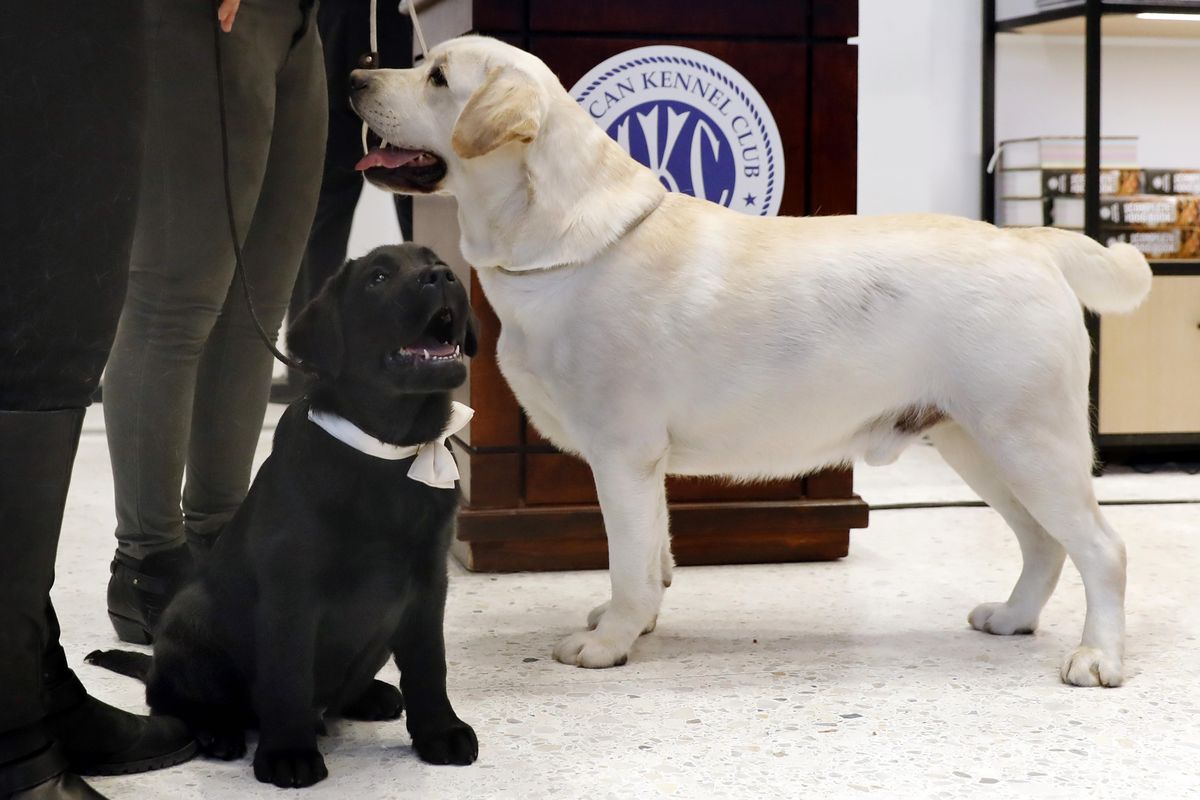Labrador retriever most pup-ular U.S. dog breed for 28th year

NEW YORK – Labrador retrievers aren’t letting go of their hold on U.S. dog lovers, but German shorthaired pointers are tugging on the top ranks of doggy popularity, according to new American Kennel Club data.
Labs topped the list for the 28th year in a row. Yet there’s been plenty of movement over time on the purebred pup-ularity ladder.
Here’s a look at the 2018 rankings being released Wednesday.
The top 10
After Labs, the top five breeds nationwide are German shepherds, golden retrievers, French bulldogs and bulldogs. Rounding out the top 10 are beagles, poodles, Rottweilers, German shorthaired pointers and Yorkshire terriers.
Labs smashed the record for longest tenure as top dog back in 2013. Fans credit the Lab’s generally amiable nature and aptitude in many canine roles: bomb-sniffer, service dog, hunters’ helper, dog-sport competitor and patient family pet.
At No. 9, the German shorthaired pointer notched its highest ranking since getting AKC recognition in 1930. These strikingly speckled hunting dogs are also versatile – some work as drug- and bomb-detectors – and active companions.
“I think people are learning about how fun the breed is,” says AKC spokeswoman Brandi Hunter.
The suddenly ubiquitous French bulldog remains the fourth most popular breed for a second year, after surging from 83rd a quarter-century ago.
The numbers:
The rankings reflect a breed’s prevalence among the 580,900 puppies and other purebred dogs newly registered in 2018 with the AKC, the country’s oldest such registry. Some 88,175 of these dogs were Labs.
AKC says registrations, which are voluntary, have been growing for six years.
Estimates of the total number of pet dogs nationwide range from about 70 million to 90 million.
The consistent fave
Beagles, now No. 6, can boast they’re uniquely beloved. No other breed has made the top 10 in every decade since record-keeping began in the 1880s.
Why? “They’re a good general family dog,” lively, friendly, relatively low-maintenance and comfortable with children, says breeder Kevin Shupenia of Dacula, Georgia. Beagles also work sniffing out contraband meat and plants at airports, detecting bedbugs in homes and doing their traditional job: hunting rabbits.
“They have a sense of humor, and they’re just characters,” Shupenia says.
The rarest of them all:
The most scant breed was the sloughi (pronounced SLOO’-ghee). The greyhound-like dog has a long history in North Africa but garnered AKC recognition only three years ago. It replaces the Norwegian lundehund in the rarest-breed spot.
How did doodles do?
Wonder where goldendoodles, puggles, or cockapoos stand? You won’t find these and other popular “designer dogs” among the 193 breeds recognized and ranked by the AKC.
That’s not to say they never will be, if their fanciers so desire. New breeds join the club periodically, after meeting criteria that include having at least 300 dogs nationwide and three generations.
Meanwhile, designer and just plain mixed-breed dogs can sign up with AKC to compete in such sports as agility, dock diving and obedience.
The whys, pros and cons of popularity
Many factors can influence a breed’s popularity: ease of care, exposure from TV and movies, and famous owners, to name a few.
Popularity spurts can expand knowledge about a breed, but many people in dogdom rue slipshod breeding by people trying to cash in on sudden cachet.
Elaine Albert, a longtime chow chow owner and sometime breeder, is glad the ancient Chinese dog is now 75th in the rankings, after leaping into the top 10 in the 1980s. Albert recalls that she and other chow rescue volunteers were swamped as people gave up dogs with temperament and health problems, which she attributes to careless breeding.
“I certainly wouldn’t want (chows) to be number one, ever,” says Albert, of Hauppauge, New York. “They belong where they are. … They’re not for everybody.”
On the other hand, aficionados of rare breeds sometimes worry about sustaining them.
The purebred debate
Some animal-welfare groups feel the pursuit of purebred dogs puts their looks ahead of their health and diverts people from adopting pets. Critics also say the AKC needs to do more to thwart puppy mills.
The club says it encourages responsible breeding of healthy dogs, not as a beauty contest but to preserve traits that have helped dogs do particular jobs.